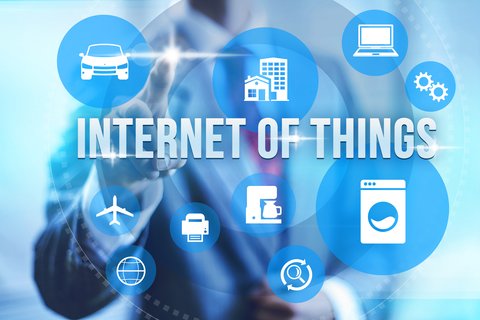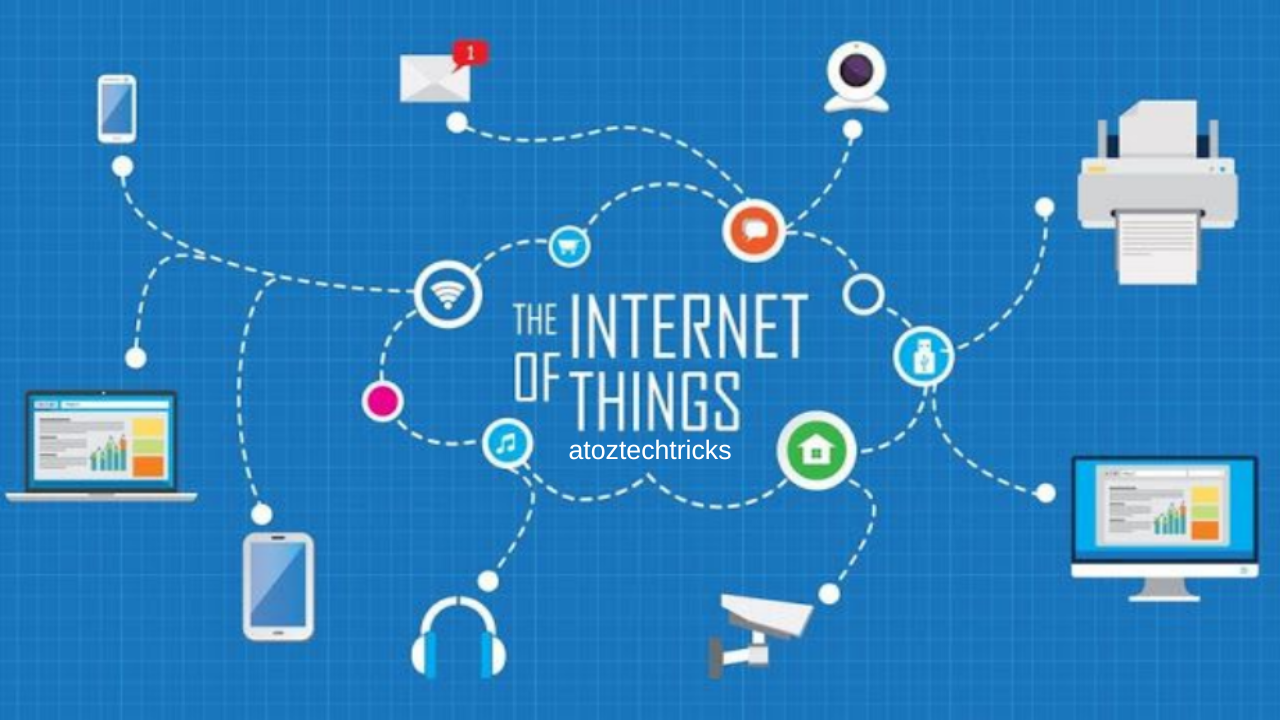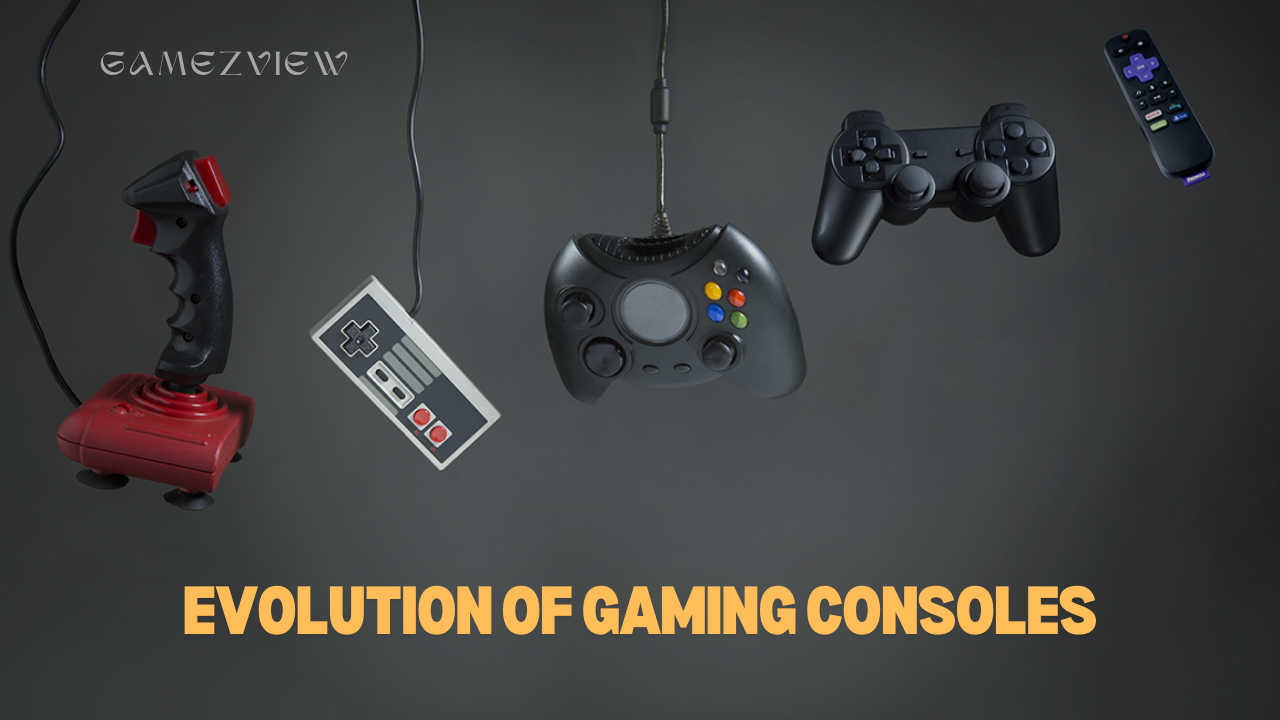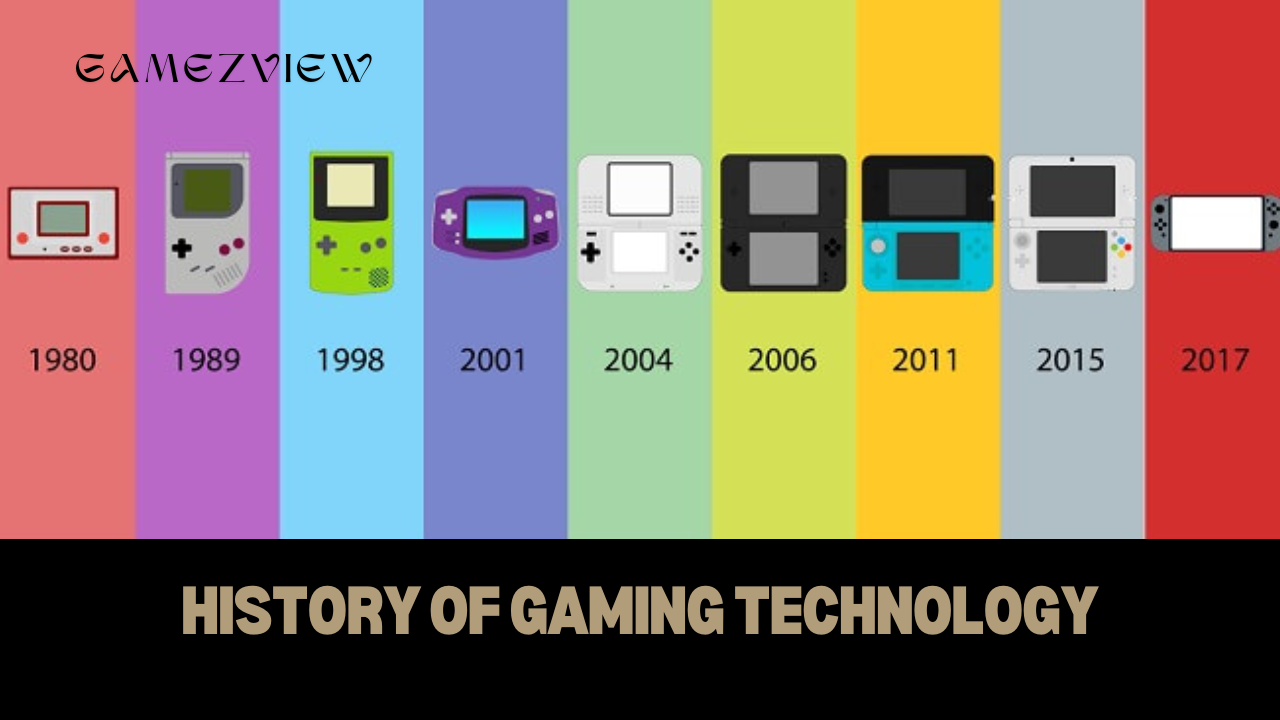The Internet of Things (IoT) has transformed the way we interact with technology, offering unprecedented opportunities while also introducing significant challenges. As billions of devices become interconnected, the IoT ecosystem is reshaping industries, economies, and daily life. However, this rapid expansion also raises concerns about security, privacy, and interoperability. This article will explore the opportunities and challenges presented by IoT, providing a comprehensive overview of its potential and the hurdles that need to be overcome.
Understanding the Internet of Things (IoT)
The Internet of Things refers to a network of physical devices, vehicles, appliances, and other objects embedded with sensors, software, and connectivity to exchange data with other devices and systems over the Internet. IoT enables devices to collect and share data, making them “smart” and capable of autonomous action without human intervention. This concept extends beyond just consumer gadgets, influencing industrial processes, healthcare, transportation, and more.
Opportunities Presented by IoT
The potential of IoT is vast, offering numerous opportunities across various sectors:
Smart Homes and Cities
Smart Homes: IoT has revolutionized home automation, allowing homeowners to control lighting, heating, security systems, and appliances remotely. Devices like smart thermostats, security cameras, and voice-activated assistants create more efficient, comfortable, and secure living environments.
Smart Cities: On a larger scale, IoT is being used to create smart cities. Connected infrastructure, such as traffic lights, waste management systems, and public transportation, can optimize resources, reduce energy consumption, and improve the quality of life for residents. Smart city initiatives also promise better public safety through real-time monitoring and response systems.
Healthcare and Wearable Technology
Healthcare: IoT has had a profound impact on healthcare, enabling remote patient monitoring, telemedicine, and personalized treatment plans. Wearable devices, such as fitness trackers and smartwatches, collect health data, allowing individuals to monitor their health and healthcare providers to access real-time information. This data-driven approach enhances preventive care, improves patient outcomes, and reduces healthcare costs.
Wearable Technology: Beyond healthcare, wearable IoT devices are used in various industries, including fitness, sports, and occupational health. These devices can monitor physical activity, sleep patterns, and environmental factors, providing users with valuable insights into their well-being.

Industrial IoT (IIoT) and Manufacturing
Industrial IoT (IIoT): The industrial sector has been one of the earliest adopters of IoT technology. IIoT involves connecting industrial equipment and machinery to the internet, enabling real-time monitoring, predictive maintenance, and process optimization. This reduces downtime, increases efficiency, and enhances overall productivity.
Manufacturing: In manufacturing, IoT facilitates the creation of smart factories where machines and systems communicate seamlessly. This leads to better inventory management, supply chain optimization, and quality control. IoT-driven automation also allows for customization and flexibility in production processes.
Agriculture and Food Security
Smart Agriculture: IoT is transforming agriculture through precision farming techniques. Sensors and devices monitor soil conditions, weather patterns, and crop health, allowing farmers to make data-driven decisions. This increases crop yield, reduces water and fertilizer usage, and minimizes environmental impact.
Food Security: IoT also plays a role in ensuring food security by tracking the entire supply chain, from farm to table. It enables real-time monitoring of food storage conditions, transportation, and delivery, reducing waste and ensuring food safety.
Energy Management and Environmental Monitoring
Energy Management: IoT enables smart energy management systems that optimize energy consumption in buildings, industries, and cities. Smart meters, connected appliances, and energy-efficient devices reduce energy wastage, lower costs, and contribute to sustainability efforts.
Environmental Monitoring: IoT devices are used for environmental monitoring, providing real-time data on air quality, water quality, and pollution levels. This information is crucial for regulatory compliance, disaster prevention, and environmental conservation efforts.
How Blockchain is Transforming Industries Beyond Cryptocurrency
Retail and Supply Chain Management
Retail: IoT has revolutionized the retail industry by enabling personalized shopping experiences. Connected devices track customer behaviour, preferences, and purchase history, allowing retailers to offer tailored recommendations and promotions. Smart shelves, automated checkout systems, and inventory management tools enhance operational efficiency.
Supply Chain Management: In supply chain management, IoT improves visibility and traceability. Connected sensors and RFID tags provide real-time data on the location, condition, and movement of goods. This reduces delays, minimizes losses, and enhances overall supply chain efficiency.
Challenges of IoT Implementation
While IoT presents numerous opportunities, it also poses significant challenges that need to be addressed to fully realize its potential:
Security and Privacy Concerns
Security Risks: One of the most pressing challenges in IoT is security. As more devices become connected, the attack surface for cyber threats expands. IoT devices are often vulnerable to hacking, data breaches, and malware attacks. A single compromised device can potentially expose an entire network to cyber threats.
Privacy Issues: IoT devices collect vast amounts of data, raising privacy concerns. Users may not be fully aware of what data is being collected, how it is being used, and who has access to it. Ensuring that IoT devices adhere to privacy regulations and that users have control over their data is crucial.
Interoperability and Standards
Lack of Standards: The IoT ecosystem is highly fragmented, with various manufacturers, platforms, and protocols. This lack of standardization can lead to compatibility issues, making it difficult for devices from different vendors to communicate and work together seamlessly.
Interoperability: Ensuring interoperability between IoT devices and systems is essential for realizing the full potential of IoT. However, achieving this requires industry-wide collaboration, the development of common standards, and the adoption of open protocols.
Scalability and Network Infrastructure
Scalability: As the number of IoT devices grows exponentially, scaling the infrastructure to support billions of connected devices becomes a challenge. IoT networks must be able to handle massive amounts of data, accommodate diverse device types, and ensure reliable connectivity.
Network Infrastructure: The existing network infrastructure may not be sufficient to support the widespread deployment of IoT. Upgrading networks to accommodate the increased demand for bandwidth, low latency, and high reliability is critical for the success of IoT applications.
Data Management and Analytics
Data Overload: IoT devices generate vast amounts of data, which can be overwhelming to manage and analyze. Storing, processing, and deriving actionable insights from this data requires robust data management strategies and advanced analytics tools.
Real-Time Analytics: Many IoT applications require real-time data processing and analytics. This necessitates the deployment of edge computing solutions, where data is processed closer to the source, reducing latency and improving response times.
Regulatory and Compliance Challenges
Regulatory Landscape: The regulatory landscape for IoT is still evolving, with different regions and industries having varying requirements. Navigating these regulations can be complex, especially for companies operating in multiple jurisdictions.
Compliance: Ensuring compliance with data protection, security, and safety standards is critical for IoT deployment. Failure to comply with regulations can result in legal penalties, reputational damage, and loss of consumer trust.
Exploring the Potential of Augmented Reality (AR) in Everyday Life
Cost and Resource Constraints
Initial Investment: Deploying IoT solutions often requires significant upfront investment in hardware, software, and infrastructure. Small and medium-sized enterprises (SMEs) may face financial constraints, limiting their ability to adopt IoT technology.
Maintenance and Upgrades: Maintaining and upgrading IoT systems over time can be costly. Devices may need regular software updates, and infrastructure may require periodic enhancements to keep up with evolving technology and security threats.
Ethical and Social Implications
Ethical Considerations: The widespread adoption of IoT raises ethical questions about surveillance, data ownership, and the potential misuse of technology. It is important to establish ethical guidelines and frameworks to ensure that IoT is used responsibly and for the benefit of society.
Social Impact: IoT has the potential to disrupt traditional industries and job markets, leading to social and economic changes. Addressing the potential impact on employment, skills, and the digital divide is crucial for ensuring inclusive growth and development.
The Future of IoT: Opportunities and Challenges Ahead
As IoT continues to evolve, several trends and developments will shape its future:
Edge Computing and 5G Connectivity
Edge Computing: The growth of IoT is driving the adoption of edge computing, where data is processed closer to the source rather than in centralized data centres. This reduces latency, improves response times, and enables real-time decision-making, especially for critical applications such as autonomous vehicles and industrial automation.
5G Connectivity: The deployment of 5G networks is expected to be a game-changer for IoT. With its high speed, low latency, and massive device connectivity capabilities, 5G will support the seamless integration of IoT devices, enabling new use cases and applications across industries.
Artificial Intelligence and Machine Learning
AI and IoT Integration: The integration of artificial intelligence (AI) and machine learning (ML) with IoT is set to revolutionize how devices interact and make decisions. AI-driven IoT systems can analyze vast amounts of data, detect patterns, and make autonomous decisions, leading to smarter and more efficient operations.
Predictive Analytics: IoT data combined with AI and ML algorithms enables predictive analytics, allowing businesses to anticipate and address issues before they occur. This is particularly valuable in industries such as manufacturing, where predictive maintenance can prevent costly equipment failures.
Enhanced Security and Privacy Solutions
Security Innovations: As IoT security concerns grow, there will be a greater emphasis on developing robust security solutions. Blockchain technology, for example, holds promise for securing IoT networks by providing decentralized and tamper-proof data management.
Privacy-Enhancing Technologies: Privacy-preserving technologies, such as differential privacy and federated learning, are emerging as solutions to protect user data in IoT environments. These technologies enable data analysis while minimizing the risk of exposing sensitive information.
Sustainability and Green IoT
Energy Efficiency: The future of IoT will increasingly focus on sustainability. Green IoT initiatives aim to reduce the environmental impact of IoT devices by optimizing energy consumption, minimizing e-waste, and promoting the use of renewable energy sources.
Environmental Monitoring: IoT will play a crucial role in addressing environmental challenges, such as climate change and resource management. Advanced sensors and monitoring systems will provide real-time data on environmental conditions, enabling more effective conservation and sustainability efforts.

Regulatory Evolution and Global Standards
Regulatory Harmonization: As IoT adoption grows globally, there will be a push for harmonized regulations and standards to ensure interoperability, security, and privacy. International collaboration will be key to establishing a consistent regulatory framework that supports innovation while protecting consumers.
Ethical Standards: The development of ethical standards for IoT will be essential to address concerns about privacy, surveillance, and the responsible use of technology. Policymakers, industry leaders, and stakeholders will need to work together to establish guidelines that balance innovation with ethical considerations.
Expansion into New Industries and Applications
Healthcare and Biomedicine: IoT will continue to expand its influence in healthcare, with innovations such as smart implants, remote surgery, and personalized medicine. These advancements will improve patient outcomes and make healthcare more accessible and efficient.
Autonomous Systems: The rise of autonomous systems, such as self-driving cars, drones, and robotics, will be heavily dependent on IoT technology. These systems will rely on IoT for real-time data processing, communication, and decision-making, leading to new possibilities in transportation, logistics, and manufacturing.
Human-Centric IoT
User Experience: The future of IoT will increasingly focus on human-centric design, ensuring that IoT devices and systems are intuitive, user-friendly, and accessible to all. This approach will enhance user adoption and satisfaction, driving the widespread integration of IoT into daily life.
Inclusive Technology: IoT will play a role in bridging the digital divide by making technology more accessible to underserved populations. Initiatives aimed at providing affordable IoT solutions and internet access will contribute to greater social and economic inclusion.
The Internet of Things represents a transformative force with the potential to revolutionize industries, enhance quality of life, and address global challenges. However, realizing the full potential of IoT requires addressing significant challenges related to security, privacy, interoperability, and scalability. As IoT continues to evolve, collaboration between industry, government, and society will be crucial in navigating these challenges and ensuring that IoT delivers on its promise of creating a smarter, more connected world.
By embracing opportunities and proactively addressing challenges, we can harness the power of IoT to drive innovation, improve efficiency, and create a more sustainable and equitable future for all. Whether through smart cities, healthcare advancements, or industrial automation, the impact of IoT will be felt across every aspect of our lives, shaping the way we live, work, and interact with the world around us.




